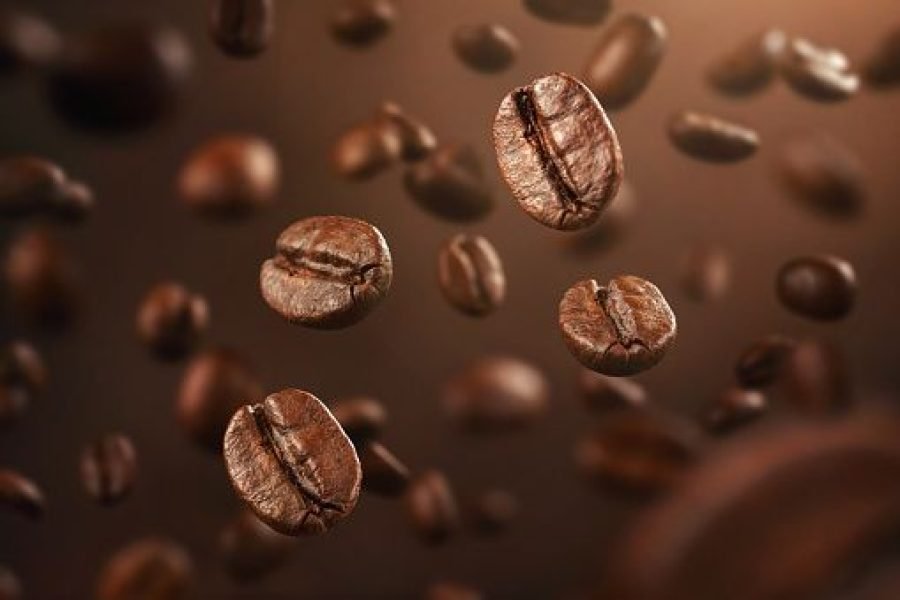Minerals in Coffee do more than hitch a ride with caffeine. They nourish the body and steer extraction chemistry, deciding whether your cup lands sweet and articulate or flat and bitter. Treat them as core variables—right alongside origin, roast, grind, and water temperature—and your coffee quality jumps immediately.
The Four Essential Minerals in Coffee (and Why They Matter)
Potassium supports fluid balance and heart function. Coffee contributes meaningful potassium to daily intake and reinforces perceived sweetness when extraction is dialed in.
Magnesium underpins energy metabolism and neuromuscular function. In the cup, it participates in buffer systems that influence acidity perception and tactile feel.
Calcium is central to bone health. In brewing water it defines “hardness,” changing how quickly desirable solubles dissolve and how stable your crema or foam appears.
Phosphorus helps energy transfer and cell signaling. In coffee it is present in smaller amounts and sits in the background compared to potassium and magnesium.
Mineral levels vary by cultivar, altitude, soil management, and processing. What stays constant: good sourcing and precise brewing expose more of the sweetness and clarity you already paid for.

How Minerals Shape Extraction—and Flavor
Hardness Duo: Calcium & Magnesium
These two set the hardness of your brew water. Too hard and you see sluggish extraction with muted aromatics and a chalky finish. Too soft and extraction overshoots, pushing bitterness and astringency. Aim for a moderate hardness profile to carry acidity, sweetness, and body in balance. If you brew manually, control timing and flow as shown in this pour-over guide: Brewing time: pour-over coffee.
Flavor Modulators: Potassium & Sodium
Potassium behaves like a mild brake on extraction, smoothing sharp edges. Sodium enhances sweetness perception. Neither replaces disciplined technique, but both nudge balance in a predictable way.
Method Sensitivity
- Percolation (V60/Kalita/automatic drip): most sensitive to water chemistry. Small mineral shifts change flow dynamics and flavor clarity. See the per-pour timing discipline in Brewing time: pour-over coffee.
- Immersion (French press, cupping): more forgiving. If your tap water is hard, immersion protects sweetness and mouthfeel. Tune ratio and contact time using The art of French press: coffee ratio.
Actionable Playbook: Harness Minerals for Better Coffee
- Start with known water. If tap water swings hard or soft, brew with a consistent filtered source. Keep a dedicated jug for coffee.
- Choose method by water. Hard water? Favor immersion or bypass pours. Softer water? Percolation methods sing.
- Tune grind to water.
- Over-extracted bitterness: go coarser or reduce contact time.
- Under-extracted sharpness: go finer or increase contact time.
- Re-mineralize with intent. Use food-grade mineral solutions or packets designed for coffee rather than ad-hoc additives. The goal is moderate hardness and balanced alkalinity—never guess; measure once, then repeat.
- Stabilize your routine. Weigh dose and water every time. Log ratio, temperature, and total brew time so improvements stick.
Roast Level, Extraction, and Minerals
Roasting changes mass and structure but does not add minerals. Lighter roasts retain a structure that yields vivid acidity and floral notes when water chemistry is supportive. Darker roasts prefer slightly lower brewing temperatures and careful timing to keep sweetness intact. In every case, mineral balance determines whether acidity reads bright-sweet or harsh.
Soil, Farming, and the Mineral Story
Mineral content begins in the farm’s soil system. Healthy agroforestry, mulching, and organic inputs sustain potassium and magnesium availability while protecting structure and biodiversity. Learn how holistic practices protect ecosystems and cup quality in Coffee and Environmental Sustainability: coffee-and-environmental-sustainability—nurturing bean, protecting planet.
On diversified farms, intercropping (tumpang sari) recycles nutrients, shades coffee, and moderates soil moisture—factors that support consistent mineral uptake. See how it works in practice: Intercropping in coffee cultivation (tumpang sari).
Storage, Freshness, and Perceived Minerality
Storage does not change the minerals inside the bean, but it changes how you taste them by preserving or losing volatile aromatics that interact with acidity and sweetness.
- Use airtight, opaque containers away from heat and light.
- Buy smaller bags; finish them quickly after opening.
- Keep a simple rotation schedule so brew water, not staleness, defines your cup.
For a complete freshness protocol and gear tips, see this practical guide: Guide to extending the life and aroma of coffee beans.
Third-Wave Adjustments that Respect Minerals
- Bypass pours (adding clean hot water after a stronger extraction) maintain clarity when hardness is high.
- Rinse filters thoroughly to remove paper taste that can mask delicate acidity.
- Recipe snapshots (ratio, temp, time) keep you honest; repeatability is quality.
When immersion is your choice, keep contact time and ratio tight using the step-by-step framework in The art of French press: coffee ratio.
FAQs
Does mineral content in beans or water matter more for flavor?
Water chemistry dominates extraction behavior in the cup. Bean minerals matter at origin, but your brew water decides how fully flavors dissolve and integrate.
Is hard water always bad for coffee?
No. Moderate hardness delivers structure and sweetness. Problems appear at extremes: very hard water mutes aromatics; very soft water over-extracts and tastes sharp.
What’s the fastest quality win if my tap water is unpredictable?
Use a consistent filtered source and a percolation recipe with controlled timing as outlined here: Brewing time: pour-over coffee.
Which method is most forgiving of hard water?
Immersion methods such as French press. Keep extraction in the sweet spot by applying the ratios in The art of French press: coffee ratio.
How do sustainability practices affect minerals in coffee?
Healthy soils and diversified plantings sustain potassium and magnesium availability and protect structure—read the farm-level playbook here: Intercropping in coffee cultivation (tumpang sari) and Coffee and Environmental Sustainability.
Pro tip: Lock your water, lock your timing, and your coffee’s natural sweetness and clarity follow. When minerals work for you—not against you—every brew tastes intentional.

